'Hindi cinema has greatly contributed to a secular idea of India' (IANS Books)
Mumbai, Aug 18 (IANS) Throughout the past 100 years of Indian cinema there have been Hindi movies that embody and define the quintessence of Hindi cinema. Filmmaker Manmohan Desai's 1977 blockbuster "Amar Akbar Anthony" is easily one of the 10 most compel
Published: Sunday,Aug 18, 2013 10:13 AM GMT-06:00
Mumbai, Aug 18 (IANS) Throughout the past 100 years of Indian cinema there have been Hindi movies that embody and define the quintessence of Hindi cinema. Filmmaker Manmohan Desai's 1977 blockbuster "Amar Akbar Anthony" is easily one of the 10 most compelling examples of such movies.
Apart from its enormous commercial success, the movie stands out for capturing Desai's effortless pluralism and charming syncretism that is at the heart of Indian nationhood. He uses the film's assertive obviousness in crafting three brothers separated at birth and raised in three different religious faiths (Hinduism, Islam and Christianity) as a powerful device to serve the kind of no-fuss, street-level cultural inclusiveness of India.
At a time when hyperbolic TV talking heads are engaged in what it means to be a "Hindu nationalist" it might be useful to revisit "Amar Akbar Anthony" for its effervescent liberalism.
It is in this context that veteran journalist and writer Sidharth Bhatia's upcoming book "Amar Akbar Anthony-Masala, Madness and Manmohan Desai" (HarperCollins India, Rs 250) acquires particular traction. The avowedly secular tone of the film and a book about it has particular resonance at a time when political debate has become so fractious.
"Manmohan Desai (MD) was not pushing a message, but the film itself was the message. Today the phrase Amar Akbar Anthony means harmony among all religions," Bhatia told IANS in an interview. "Hindi cinema has greatly contributed to a secular idea of India. AAA is a very good example."
Excerpts from an interview:
Q: What is your fundamental thesis about AAA?
A: We know of course that it is a formula film. But it is also a film about the secular idea of India. Manmohan Desai was not pushing a message, but the film itself was the message. Today the phrase Amar Akbar Anthony means harmony among all religions. It is also a Bombay film, a film that reflects the Bombay ethos of cosmopolitanism and also is about characters you wouldn't find anywhere else. Can you think of a Catholic bootlegger or a glamorous woman pickpocket who roams the streets in any other city? Or even Akbar, the timber merchant. We in Bombay know these characters.
Q: Where would you put AAA in the context of Hindi movies as a film that both embodies and redefines Hindi cinema?
A: When we think of the 1970s, we think of angry films, both in the mainstream and in the art circuit. The country was in an angry mood and our films reflected that. This is more so when we refer to Amitabh Bachchan's films. But AAA is a fun film, full of entertainment and joie de vivre. In that sense, it broke away from the trend. And it gave new life to the lost and found formula. It is a trendsetter of sorts.
Q: Is it your sense that AAA also went well beyond Manmohan Desai's penchant for non-conformism or was he fully conscious of its potential?
A: One of Desai's favorite phrases, from what several people associated with AAA told me, was "this is not a Satyajit Ray film", in that it was not serious and with a message. But I think that is misleading. He knew exactly what he was setting out to do and carefully chose everyone, from the actors to the dialogue writer to the cameraman. Detailed instructions were given to all of them. He had a plan, and he worked towards it, even if his working style was chaotic, since he was making four films at the same time.
Q: Do you agree that a movie like AAA does a far more powerful job of serving India's easy secularism than any seriously propounded political treatise might?
A: Whenever a message is delivered in a heavy handed manner, it loses impact since the audience tunes off. Here the message, as much as it is a message, is just there, for an audience to pick up. No sermons are given. The scenes speak for themselves, like three of them giving blood to their mother simultaneously - what could be a stronger message of harmony? Or the fact that in the end none of the men or their girlfriends change their religion. That for me is very important.
Q: What are the challenges of an entire book about a movie, even one as celebrated as AAA?
A: I soon realized that everybody had seen this film and knew it in detail - songs, situations, dialogue. What could I tell them that was new and that too in a whole book. It was a challenge. But as I dug and researched, I realized that the story of how it was made was unknown, or forgotten, and no one had ever done a serious study of the film and what it stood for. I have tried to do that.
Q: Do you think AAA was a product of and unique to its time or its relevance stretches beyond that?
A: Interestingly, it has travelled well over time and generations, though now people tend to laugh at some of its absurdities, such as the miracles. On the other hand, if we are ready to believe in Indian superheroes or pelvic dances in Europe or indeed cars blowing up on Indian streets, then why not this? After all, it is just a cinematic device.
Q: Why is it that serious scholars tend to underestimate the transforming effects of a movie like this? Is it the often absurd theatricality of it or just general apathy towards popular cinema?
A: Interestingly, film scholars, abroad more than in India, are turning to popular Indian cinema. Often the tone, especially among many Indian writers, is patronizing. I think popular Hindi cinema has a very important place in the national discourse in that they reinforce many important messages. Often they are regressive and silly and over the top, but Hindi cinema on the whole has greatly contributed to a secular idea of India. AAA is a very good example.
Q: What according to you are the three biggest strengths of AAA?
A: That not once do we feel bored and there is no slackening of pace. That implausible situations seem perfectly logical while you are watching the film. And that nearly four decades after it was made, it still looks fresh and has the capacity to make you laugh. Will today's films be able to do it 40 years from now?
(Mayank Chhaya can be contacted at [email protected])
Your reaction
 Nice
Nice Awesome
Awesome Loved
Loved LOL
LOL OMG
OMG Cry
Cry Fail
Fail

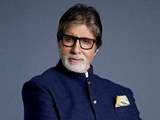



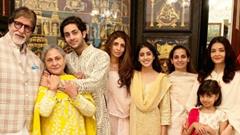

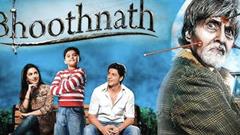
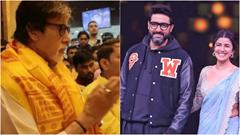


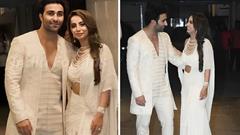

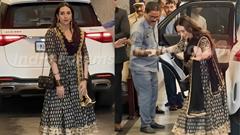

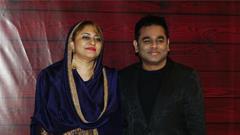

Comments (0)